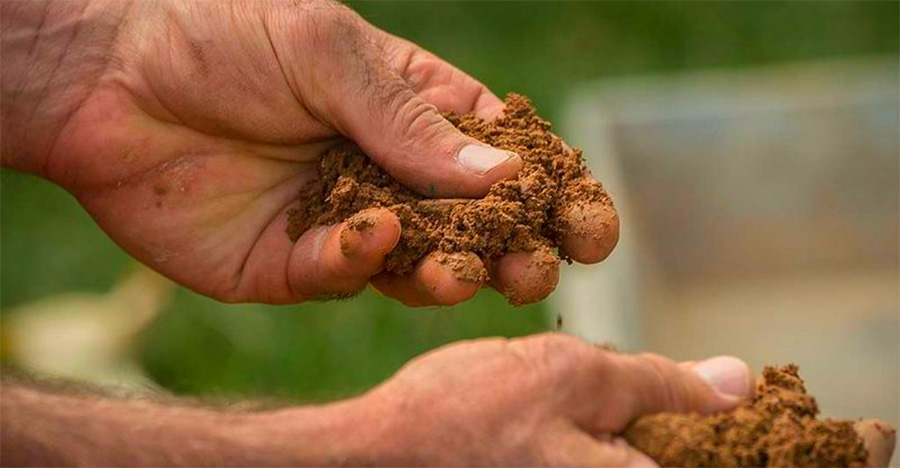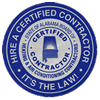If you’ve lived in North Alabama for more than a year, you already know about red clay. It stains everything, turns into cement when it dries, and becomes a slippery nightmare when wet. What you might not realize is that this same soil is quietly waging war on your outdoor HVAC unit in ways that cost Decatur, AL, homeowners hundreds, sometimes thousands, of dollars in avoidable repairs.
At Southeastern Mechanical Services, we see the damage red clay causes almost daily. And honestly, most homeowners have no idea it’s even happening until something expensive breaks.
Why Alabama Red Clay is Particularly Brutal
Red clay isn’t just regular dirt that happens to be rust-colored. The high iron oxide content (that’s what makes it red) combined with extremely fine particle size creates a perfect storm for HVAC equipment.
Here’s what makes it so problematic:
The clay particles are microscopic. We’re talking smaller than dust, which means they infiltrate spaces that normal soil can’t reach. Your condenser coils, fan housing, electrical connections…all vulnerable.
It retains moisture like a sponge. Even days after rain, red clay stays damp. That constant moisture creates ideal conditions for corrosion, mold growth, and electrical problems.
When it dries, it hardens like concrete. You’ve probably scraped it off your car or boots. Same thing happens inside your HVAC unit, creating an almost ceramic coating that blocks airflow and traps heat.
The Settling Problem Nobody Talks About
This is the big one that catches people off guard. Alabama’s red clay soil expands when wet and contracts when dry, sometimes moving several inches in a single season. We’ve measured concrete pads that shifted over 3 inches in just two years.
When your outdoor unit sits on a pad that’s slowly tilting or sinking, several expensive things start happening:
- Refrigerant lines get stressed and develop leaks
- The compressor runs at an angle (they’re designed to be perfectly level)
- Condensation doesn’t drain properly, creating standing water
- Electrical connections get pulled loose
- Vibration increases, wearing out components faster
And here’s the kicker: most homeowners don’t notice the tilt until we point it out during a service call. By then, damage is already accumulating.
Moisture Migration and Metal Corrosion
Red clay doesn’t just sit there passively. It actively pulls moisture toward itself through capillary action, kind of like a wick in a candle. This means even if your unit isn’t sitting in standing water, moisture is constantly being drawn up from the soil.
We regularly find outdoor units in Decatur with rust developing from the bottom up. The copper refrigerant lines? Corroding where they enter the unit. Electrical connections? Green with corrosion. Metal mounting brackets? Rusted through.
The funny thing is, units on the north side of houses (where things stay damper longer) show about 40% more corrosion damage than south-facing units. That’s how much moisture matters.
The Airflow Obstruction Issue
When red clay dries on condenser coils, it doesn’t just flake off like regular dirt. It creates a hard coating that blocks airflow more effectively than you’d think possible. We’ve seen units lose 30% of their cooling capacity just from clay buildup on the coils.
Think about it like this: your condenser needs to dump heat from your house into the outside air. When coils are coated with dried clay, heat transfer drops dramatically. Your system runs longer, works harder, and your electric bill climbs while your comfort suffers.
Plus, the reduced airflow makes the compressor run hotter, which shortens its lifespan. Compressors are expensive. Like, “maybe I should just replace the whole system” expensive.
Drainage Problems Specific to Clay Soil
Here’s something most people don’t consider: red clay doesn’t drain. At all. Water just sits on top of it or moves incredibly slowly through it.
What this means for your HVAC unit:
- Standing water around the pad after every rain
- Constant high humidity right where your unit sits
- Mud that gets pulled into the unit by fan action
- Foundation settling as water pools and the clay softens
We’ve seen units that were perfectly installed on level pads end up partially submerged after a few years because the clay soil around them turned into a collection basin.
Real Solutions That Actually Work
Okay, enough doom and gloom. Let’s talk about what Decatur homeowners can actually do about this.
Proper Pad Installation (The Foundation Matters)
Standard 4-inch concrete pads aren’t enough in red clay areas. We recommend:
- Excavating 12-18 inches below the pad
- Filling with compacted gravel for drainage
- Using fiber-reinforced concrete at least 6 inches thick
- Making the pad extend 12 inches beyond the unit on all sides
Yes, it costs more upfront. But compare that to replacing a compressor or entire unit in 7 years instead of 15.
Gravel Aprons and French Drains
Creating a 2-foot gravel border around your unit does two things: keeps clay from direct contact with the equipment and provides drainage so water doesn’t pool. For particularly problematic spots, we install small French drains that carry water away from the unit.
It’s not glamorous, but it works.
Elevation Strategies
Sometimes the best solution is just getting the unit higher. Elevated platforms keep equipment above clay splashback and away from moisture-rich soil. We see this especially in low-lying Decatur properties near the Tennessee River where drainage is challenging no matter what you do.
Maintenance Approaches for Clay Country
Living with red clay means adjusting your maintenance schedule. Standard once-a-year coil cleaning? Not enough here.
What works in Alabama:
- Bi-annual professional coil cleaning (spring and fall)
- Monthly visual checks of pad level
- Keeping grass and vegetation at least 3 feet back (reduces moisture and prevents clay splash)
- Annual inspection of electrical connections for corrosion
- Quarterly gentle hosing of the exterior (not high pressure, which can damage fins)
And here’s something we tell everyone: if you see red clay dried on your unit, don’t just spray it off with a pressure washer. You might think you’re helping, but you’re potentially bending fins and forcing clay deeper into the unit. Trust us on this one.
The Replacement Reality Check
When we replace outdoor units in Decatur, we see it all. Units that lasted 8 years instead of 15. Concrete pads cracked in half. Metal cabinets corroded through at the bottom. Refrigerant lines with green corrosion eating through the copper.
Almost all of it traces back to red clay soil issues that could have been addressed.
Look, we get it. Nobody buys a house thinking about soil composition and how it’ll affect their air conditioning. But now you know. And knowing means you can do something about it before small problems become expensive emergencies.
Questions You Should Ask Your HVAC Contractor
Not every HVAC company understands Alabama soil challenges. When you’re getting quotes for installation or major repairs, ask:
- How thick will the concrete pad be?
- What’s going underneath the pad?
- How will you address drainage around the unit?
- What’s your plan for preventing pad settling?
If they look confused or say “standard installation,” keep shopping.
Partner with Local Experts Who Understand Alabama Soil
At Southeastern Mechanical Services, we’ve been installing and servicing HVAC systems in Decatur long enough to know that what works in Georgia or Tennessee doesn’t always work here. Our red clay presents unique challenges that require specific solutions.
Whether you’re installing a new system, dealing with an existing unit that’s showing clay-related damage, or just want someone to assess your current setup, we can help. We’ll look at your specific soil conditions, drainage patterns, and equipment placement to develop a plan that actually addresses the real-world challenges of North Alabama.
Contact us today at 256-686-3444 for a consultation. Let’s make sure your HVAC investment lasts as long as it should, red clay and all.








